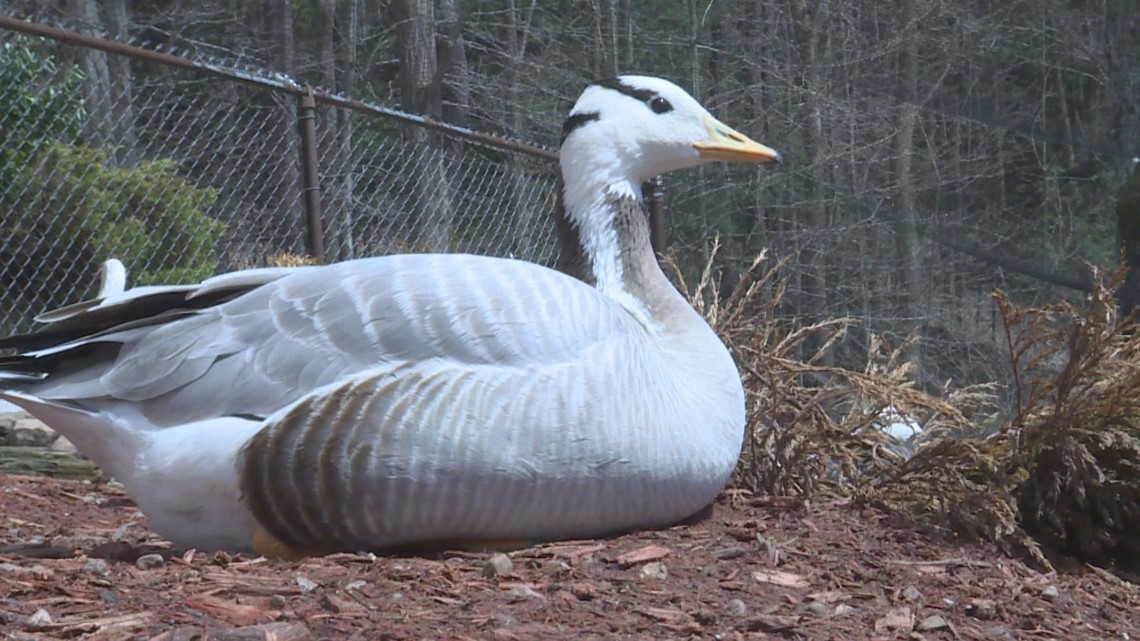DELEVAN, N.Y. — Birds are amazing. Intelligent, beautiful and superbly adaptive. They are related to dinosaurs and are one of the oldest species on earth. They are part of our art and our folklore.
One of the most impressive species are bar-headed geese. Native to India, they are the world's highest flying bird. They fly up to 30,000.
Flying at such an altitude is a monumental task. To accomplish this they have evolved a remarkable physical adaptation. Gooseneck Hill Founder Rosemary Miner explains that oxygen levels at that height are less than 10 percent of that found at sea level.
"They have two air sacs in front of the lung," Miner said. "Before they breathe the air into the lungs, it goes into these small air sacs that warms the air, and then it will go into the lungs.
"Otherwise their lungs would freeze up, because at that altitude the air is thinner, and also, it's colder, so they'd die, they couldn't do it."
Bar-heads have tremendously strong wings. That helps them at those great heights, as they ride air currents that speed them along at up to 100 mph.
So why do they fly where no others dare to soar? Miner says the reason is as old as creation.
"Because they nest in the Himalaya Mountains, and they have to go over the Himalayas to nest there, and they nest right in the snow," Miner said. "They're the first birds that we have here that nest."


The only place in Western New York to experience these masters of the air is Gooseneck Hill Waterfowl Sanctuary in Delevan. Founder Rosemary Miner has been caring for these and hundreds of other ducks and geese for decades. The majority of their birds are either threatened or endangered.
"Since 1983 we started raising birds. At first we only had 12 birds, and now we have 700-some, and 80 in my incubator," Miner said.
Incubating those eggs is a challenge all its own.
"Well, you have to candle them, and you have to make sure you don't have any rotten ones in the incubator, or else it will kill all the other eggs, and you have to make sure it's 99.5, and humidity's about 50 percent, and you have to make sure it doesn't drop or change temperature and humidity, and then you have to check the eggs all the time," Miner said.
Gooseneck Hill is the world's largest covered aviary and a unique regional jewel, but the cost of preserving so many threatened species is steep, and they can't do it without the community's assistance.
Fortunately, a chance to do that is just around the corner. The sanctuary's annual fundraiser, Taste Of The Southtowns, happens Sunday, April 28 at St. Aloysius Hall in Springville.
There will be a lot of great food, live music, basket raffles, and above all, you'll be supporting a worthy organization. To find out more, we'll provide a link to their website here.
MORE ON WGRZ.COM

